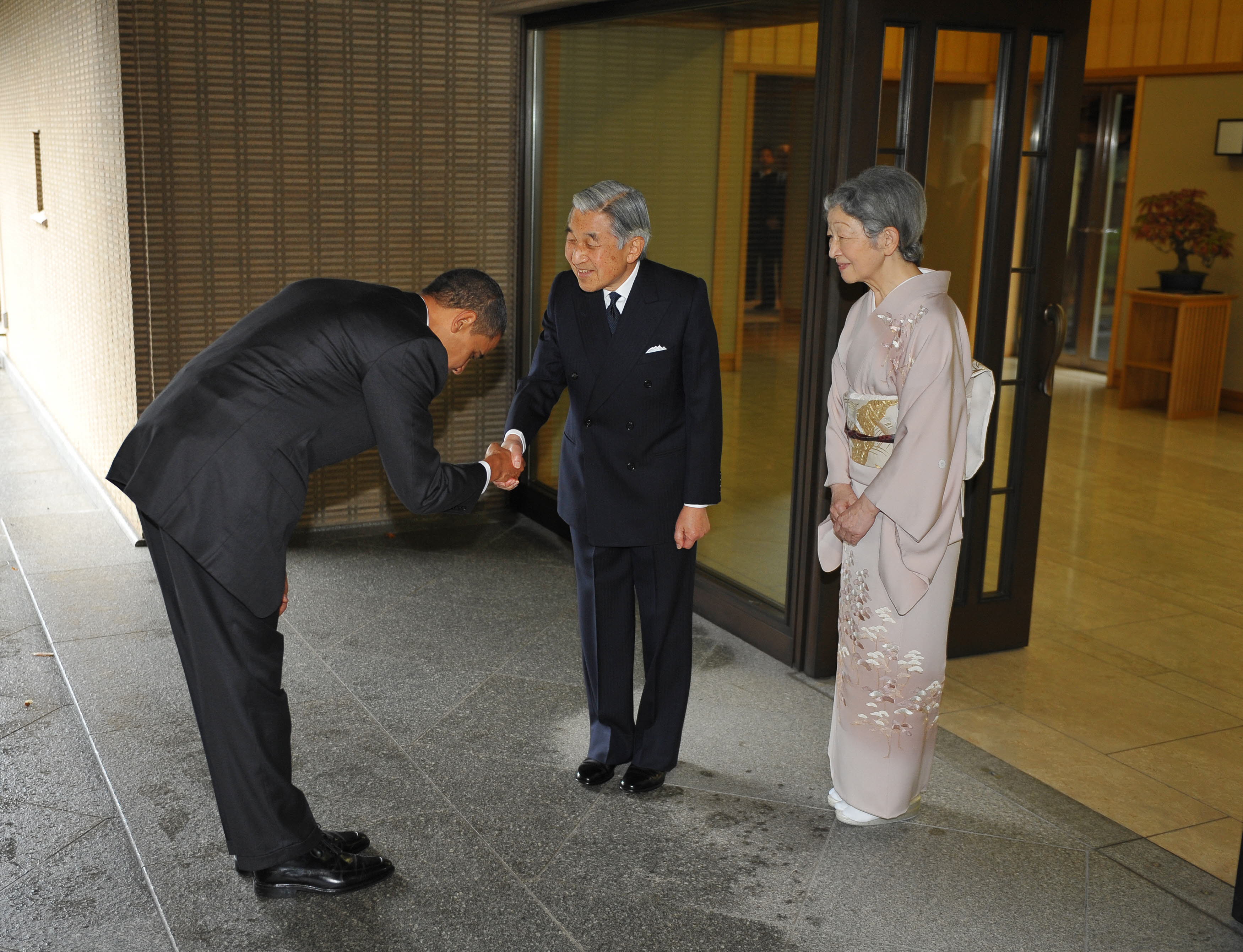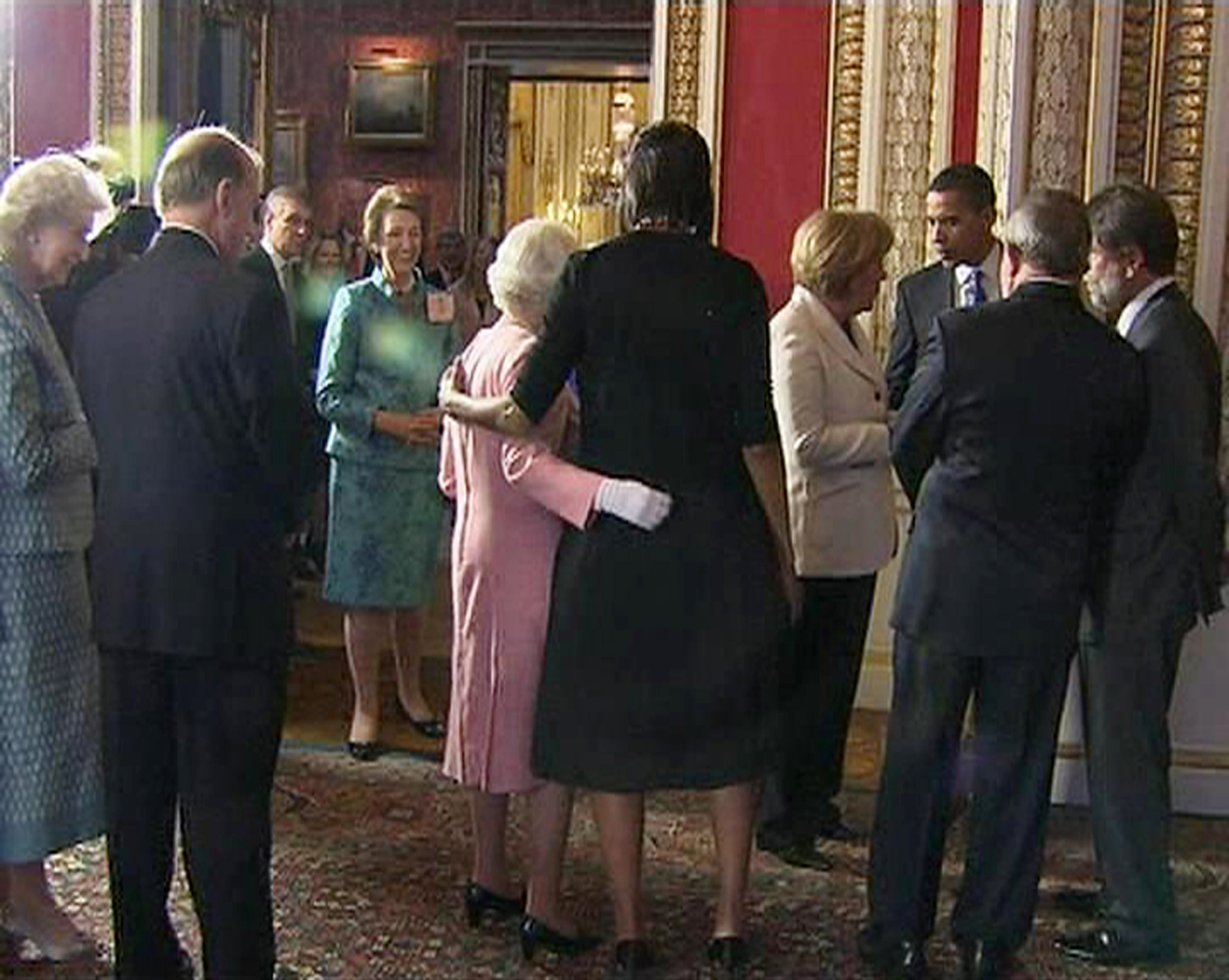President Barack Obama’s handshake with Cuban leader Raul Castro on Tuesday became an instant media sensation. Journalists pounced on the moment — during Nelson Mandela’s memorial service — in search of insight into the future of U.S.-Cuba relations, while some in the Twitterverse responded with anti-Communist outrage (and some refreshingly sarcastic faux-outrage).
But is it really such a big deal for one person to shake another person’s hand just because both happen to be the chief executives of their respective countries? After all, this isn’t even the first Cuban-American handshake: In 2000, Bill Clinton shook hands with Fidel Castro, the original Cuban boogeyman himself, though no cameras recorded the event.
“It is a big deal,” Marvin Kalb, a Harvard professor, foreign policy scholar and the author of The Road to War, told TIME. “It was a handshake that everybody could see and it was clearly a symbol that both sides understood.”
The pomp and circumstance of public diplomacy, Kalb said, is vitally important. “Protocol in diplomacy is often as important as the substance of the negotiation because it establishes the parameters of the negotiation. It says to both sides and the world watching that something is happening here and both nations are prepared to talk.”
TIME decided to look into some of the great moments in public diplomacy through body language. We all spend plenty of time dissecting the codes and doublespeak of what politicians say. But now, come, dear reader, and let’s get physical.
The Obama-Chavez handshake
Obama risked recrimination early in his presidency by shaking the hand of another Latin American leftist: Hugo Chavez. Just weeks earlier, Chavez had publicly called the president an “ignoramus.” Responding to critics, the White House said the U.S. could afford to extend the diplomatic courtesy of a handshake to the leader of Venezuela. “Its defense budget is probably 1/600th of the U.S.,” Obama said, according to the Los Angeles Times. “It’s unlikely that as a consequence of me shaking hands or having a polite conversation with Mr. Chavez that we are endangering the strategic interests of the United States.”
Obama also drew conservative ire in 2009 when he bowed to Japan’s Emperor Akihito. Critics accused the president of bowing too low and of symbolically lowering the stature of the U.S. in front of royalty. Others pointed out that the bow is fairly innocuous greeting in Japan, though it is not generally executed Obama-style, with simultaneous handshake.
The Obama-Abdullah handshake
Before the Emperor-gate scandal, Obama was criticized for seeming to bow while shaking hands with King Abdullah of Saudi Arabia. The White House tried, unconvincingly, to argue that the president was just stooping because he’s taller than the king. Maybe the bow-plus-handshake was just Obama’s go-to move before the critics ridiculed it out of him?
[youtube=http://www.youtube.com/watch?v=9WlqW6UCeaY&w=600&h=350]
Bush wants to hold your hand
Obama’s predecessor George W. Bush earned some quizzical looks over his own use of a greeting to King Abdullah unfamiliar to most Americans. Having invited Abdullah to visit his ranch in Crawford, Texas, Bush walked hand-in-hand with the king — a traditional sign of friendship in Saudi Arabia — on a stroll through a bed of Texas bluebonnets. Bush was working to mend relations with one of the country’s chief allies in the Middle East, which had been strained since a mostly-Saudi group of terrorists brought down the World Trade Center in 2001.
The ‘groper-in-chief’
For a fleeting news cycle in 2006, comedians and critics panned Bush as America’s “Groper-in-Chief” after a video of Bush trying to give German Chancellor Angela Merkel an unsolicited back rub at a G-8 Summit went viral. The breach of protocol (do we even have protocol on back rubs at international summits?) made a bigger stink in the U.S. than in Germany, but Merkel’s shocked/creeped-out reaction is nonetheless priceless.
[youtube=http://www.youtube.com/watch?v=eTQY1Aw9zcs&w=600&h=350]
Don’t touch the queen
First Lady Michelle Obama ruffled feathers in 2009 when she placed her hand on the Queen of England’s back, breaking with centuries of royal protocol holding that, whatever you do… Don’t Touch The Queen. Never mind that Mrs. Obama is not a royal subject and thus not necessarily beholden to antiquated royal protocol, the Queen may have invited contact as she put her hand on Obama’s back first. In any case, the whole episode wasn’t as inexplicable as the time George W. Bush winked at the Queen.
Shoe-pounding mad
Perhaps the most famous incident of physical diplomacy occurred at the 1960 United Nations General Assembly, when Soviet Premier Nikita Krushchev, ticked off by something a delegate from the Philippines had said, reportedly removed his shoe, waved it in the air, and pounded on his desk loudly until the entire assembly was watching him. “It was such fun!” Krushchev is said to have later remarked. Accounts differ as to whether or not this piece of diplomatic lore ever actually took place. If it did, somehow all the cameras in the General Assembly hall missed it. No video or photo of the incident exists, and that famous picture of Khrushchev waving his loafer? Apparently a fake. Maybe Khrushchev was more a master of protocol than history remembers.
President Barack Obama’s handshake with Cuban leader Raul Castro on Tuesday became an instant media sensation. Journalists pounced on the moment — during Nelson Mandela’s memorial service — in search of insight into the future of U.S.-Cuba relations, while some in the Twitterverse responded with anti-Communist outrage (and some refreshingly sarcastic faux-outrage).
But is it really such a big deal for one person to shake another person’s hand just because both happen to be the chief executives of their respective countries? After all, this isn’t even the first Cuban-American handshake: In 2000, Bill Clinton shook hands with Fidel Castro, the original Cuban boogeyman himself, though no cameras recorded the event.
“It is a big deal,” Marvin Kalb, a Harvard professor, foreign policy scholar and the author of The Road to War, told TIME. “It was a handshake that everybody could see and it was clearly a symbol that both sides understood.”
The pomp and circumstance of public diplomacy, Kalb said, is vitally important. “Protocol in diplomacy is often as important as the substance of the negotiation because it establishes the parameters of the negotiation. It says to both sides and the world watching that something is happening here and both nations are prepared to talk.”
TIME decided to look into some of the great moments in public diplomacy through body language. We all spend plenty of time dissecting the codes and doublespeak of what politicians say. But now, come, dear reader, and let’s get physical.
The Obama-Chavez handshake
Obama risked recrimination early in his presidency by shaking the hand of another Latin American leftist: Hugo Chavez. Just weeks earlier, Chavez had publicly called the president an “ignoramus.” Responding to critics, the White House said the U.S. could afford to extend the diplomatic courtesy of a handshake to the leader of Venezuela. “Its defense budget is probably 1/600th of the U.S.,” Obama said, according to the Los Angeles Times. “It’s unlikely that as a consequence of me shaking hands or having a polite conversation with Mr. Chavez that we are endangering the strategic interests of the United States.”
Obama also drew conservative ire in 2009 when he bowed to Japan’s Emperor Akihito. Critics accused the president of bowing too low and of symbolically lowering the stature of the U.S. in front of royalty. Others pointed out that the bow is fairly innocuous greeting in Japan, though it is not generally executed Obama-style, with simultaneous handshake.
The Obama-Abdullah handshake
Before the Emperor-gate scandal, Obama was criticized for seeming to bow while shaking hands with King Abdullah of Saudi Arabia. The White House tried, unconvincingly, to argue that the president was just stooping because he’s taller than the king. Maybe the bow-plus-handshake was just Obama’s go-to move before the critics ridiculed it out of him?
[youtube=http://www.youtube.com/watch?v=9WlqW6UCeaY&w=600&h=350]
Bush wants to hold your hand
Obama’s predecessor George W. Bush earned some quizzical looks over his own use of a greeting to King Abdullah unfamiliar to most Americans. Having invited Abdullah to visit his ranch in Crawford, Texas, Bush walked hand-in-hand with the king — a traditional sign of friendship in Saudi Arabia — on a stroll through a bed of Texas bluebonnets. Bush was working to mend relations with one of the country’s chief allies in the Middle East, which had been strained since a mostly-Saudi group of terrorists brought down the World Trade Center in 2001.
The ‘groper-in-chief’
For a fleeting news cycle in 2006, comedians and critics panned Bush as America’s “Groper-in-Chief” after a video of Bush trying to give German Chancellor Angela Merkel an unsolicited back rub at a G-8 Summit went viral. The breach of protocol (do we even have protocol on back rubs at international summits?) made a bigger stink in the U.S. than in Germany, but Merkel’s shocked/creeped-out reaction is nonetheless priceless.
[youtube=http://www.youtube.com/watch?v=eTQY1Aw9zcs&w=600&h=350]
Don’t touch the queen
First Lady Michelle Obama ruffled feathers in 2009 when she placed her hand on the Queen of England’s back, breaking with centuries of royal protocol holding that, whatever you do… Don’t Touch The Queen. Never mind that Mrs. Obama is not a royal subject and thus not necessarily beholden to antiquated royal protocol, the Queen may have invited contact as she put her hand on Obama’s back first. In any case, the whole episode wasn’t as inexplicable as the time George W. Bush winked at the Queen.
Shoe-pounding mad
Perhaps the most famous incident of physical diplomacy occurred at the 1960 United Nations General Assembly, when Soviet Premier Nikita Krushchev, ticked off by something a delegate from the Philippines had said, reportedly removed his shoe, waved it in the air, and pounded on his desk loudly until the entire assembly was watching him. “It was such fun!” Krushchev is said to have later remarked. Accounts differ as to whether or not this piece of diplomatic lore ever actually took place. If it did, somehow all the cameras in the General Assembly hall missed it. No video or photo of the incident exists, and that famous picture of Khrushchev waving his loafer? Apparently a fake. Maybe Khrushchev was more a master of protocol than history remembers.






